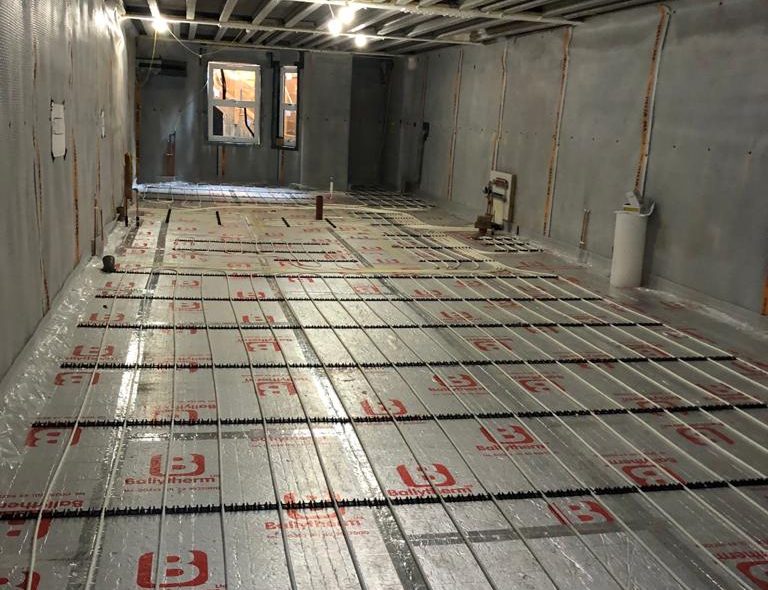Underfloor heating is a good choice for those who want to free the space in their house taken by radiators and improve heating efficiency, because unlike radiators, underfloor heating distributes heat evenly. It is installed right beneath the top layer of your floor, on top of insulation – in form of either pipes or heating mats/loose wires. The installation process varies depending on type of underfloor heating.
There are two types of underfloor heating; both types have their advantages and disadvantages:
- Electric underfloor heating (dry system)
- Water underfloor heating (wet system)
Electric underfloor heating is made for small spaces, such as bathrooms or kitchens. Since the flooring in those rooms is usually made of materials cold in touch, underfloor heating can provide a nice warm surface to walk on. Installing electric underfloor heating in entire house or in big rooms would not be financially profitable since it requires a lot more energy to run than water underfloor heating. It is however much cheaper and easier to install, as the installation process does not require any hydraulic connections and rising the floor level. Dry system is in form of either loose wires or wires incorporated into mats in regular intervals which then require to be connected to the mains supply. To control the temperature, you use the thermostat. As much as it is easier to lay out a mat, you may prefer to go with loose wires if the room in which the underfloor heating would be installed is of uncommon shape.
If you want to install underfloor heating in your entire house, your choice would be water underfloor heating. It is cheaper to run than electric underfloor heating, but much more expensive to buy and more intrusive to install. Because pipes take more space than wires, the floor level would need to be raised. Because the installation process of the wet system is much more complicated, it would need to be done by a specialist, who would then connect it to your boiler by using manifold. Water underfloor heating lays less pressure on a boiler than a radiator, as it requires a water of lower temperature to run. Same as electric underfloor heating, wet system is also controlled by thermostat.
Not every floor is suitable for underfloor heating. For example, solid wood flooring does not go well with underfloor heating. Engineered boards on the other hand should be a good choice when it comes to timber flooring. They are also less prone to alter when exposed to changes in temperature and humidity level. Before choosing the right floor for your house with underfloor heating, you should always liaise with the floor supplier prior to making a purchase.
